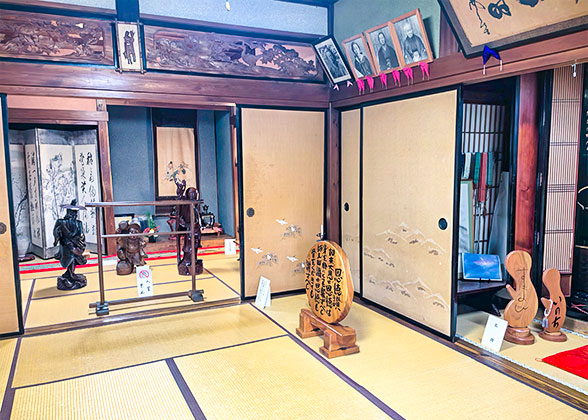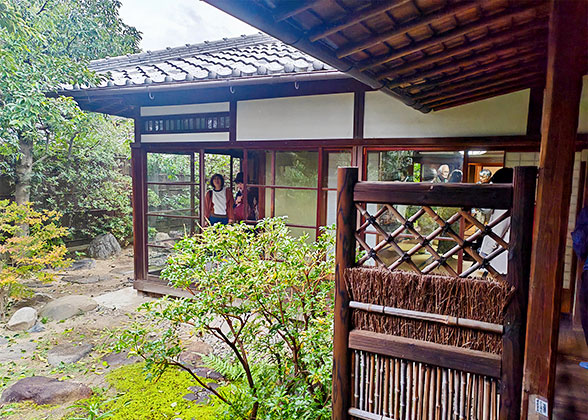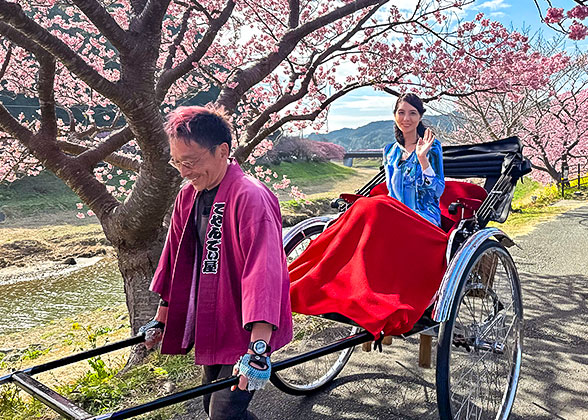Mount Fuji Weather in January
Mount Fuji weather in January is cold, with low precipitation at mountain foot but possibly heavy snowfall up there.

Mount Fuji in January
|
How Cold Is Mount Fuji in January?
January is the coldest month in Mount Fuji, with the monthly average temperature ranging from -6 to 5℃ (21.2-41℉) around the foothills. The maximum temperatures occasionally reach 8℃ (46.4 ℉), while the minimum temperatures sometimes drop to below -8℃ (17.6℉). In the higher mountain areas, it’s frosty. Mount Fuji’s 5th Station, the highest point climbers can reach this month, has highs only around -3°C (26.6°F) and lows around -16°C (3.2°F).Precipitation & Humidity
Precipitation at the foothills is low throughout January, with an average monthly precipitation of 97 mm distributed over 12 days. Generally speaking, the mountain foot mainly experiences light rain, which means it may drizzle for a little while and turns clear afterwards.

High Visibility in January
|
Does Mount Fuji Snow in January?
Yes, there are a few snowy days around the foothills of the mountain. On the mountain like around the Mount Fuji’s 5th Station, precipitation is often in form of heavy snowfall.Due to its temperate maritime climate and the large amount of snow on the higher mountain, the humidity in the surrounding areas in January is not low, at 62%.
Daylength & Sunshine Hours
Sunrise time: 06: 47 – 06: 55Sunset time: 16: 43 – 17: 12
The sun sets very early this month, and you can only enjoy an average daylight of about 10 hours. Therefore, if you want to make most of your time during the day, you’d better start your itinerary early.
However, the good news is that there is plenty of sunshine in January, lasting an average of about 6 hours a day, which provides tourists with good visibility for taking more delightful photos of the mountain.

Daylight of Mount Fuji
|
Is It Worth to Visit Mount Fuji in January?

Arakurayama Sengen Park
|
How to Stay Warm during the Trip to Mount Fuji in January?
In the day when the sun is absent and wind blows, you can wear thermal inner layers like the wool sweater or thick hoodie with fur linings plus a down coat to keep out the cold. In the sunny day, when the weather is not severely cold, it’s okay for you to wear a wool coat as the out layer instead. As for the bottom, it’s necessary to add a thermal underwear inside your thick sweatpants.

|
Thick shoes like the snow boots are the best choices during your trip. Also, make sure your shoes are water-proof and anti-slip for there may be snow and ice on the ground. Besides, it would be nice to prepare several wool socks for extra warmth.
Considering that you may start your visit early in the morning, it is recommended that you wear a mask otherwise your face will freeze and your mouth and nose will inhale too much cold air, causing discomfort. Other accessories like the winter hat, wool scarf and gloves are essential in this cold month.
If you want to climb to the 5th station and get close to the snow-capped Mount Fuji, in addition to the above-mentioned clothing, you need to take more protective measures against the cold, such as wearing winter-specific mountaineering clothes and climbing shoes, wearing elbow and knee pads, and most importantly, wearing goggles to prevent the glare of the nearby snow-capped mountains.
Travel Recommendations & Tips for Mount Fuji Trip in January
![]() Lake Saiko offers you unique travel experience where there are numerous frost-covered trees sparkling like diamonds under the sunshine during the Lake Saiko Ice Festival that is usually held since late January. However, you’d better check the specific schedule of the festival in advance since it takes place based on the weather conditions.
Lake Saiko offers you unique travel experience where there are numerous frost-covered trees sparkling like diamonds under the sunshine during the Lake Saiko Ice Festival that is usually held since late January. However, you’d better check the specific schedule of the festival in advance since it takes place based on the weather conditions.
|
|
|
Mount Fuji Weather by Month
You May Like
-
 11 Days Mini Group Tour to Tokyo - Hakone (Mt. Fuji) - Kyoto - Nara - Osaka - Hiroshima... from USD3554
11 Days Mini Group Tour to Tokyo - Hakone (Mt. Fuji) - Kyoto - Nara - Osaka - Hiroshima... from USD3554 -
 8 Days Mini Group Tour to Tokyo - Hakone & Mt. Fuji - Kyoto - Nara - Osaka - Hiroshima... from USD2771
8 Days Mini Group Tour to Tokyo - Hakone & Mt. Fuji - Kyoto - Nara - Osaka - Hiroshima... from USD2771 -
 10 Days Private Tour of Tokyo - Mt. Fuji - Tokyo - Nagano - Matsumoto - Nakasendo Way... from USD2859
10 Days Private Tour of Tokyo - Mt. Fuji - Tokyo - Nagano - Matsumoto - Nakasendo Way... from USD2859

